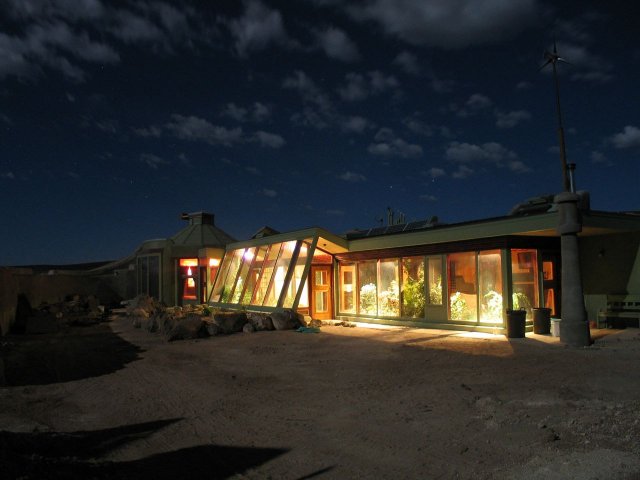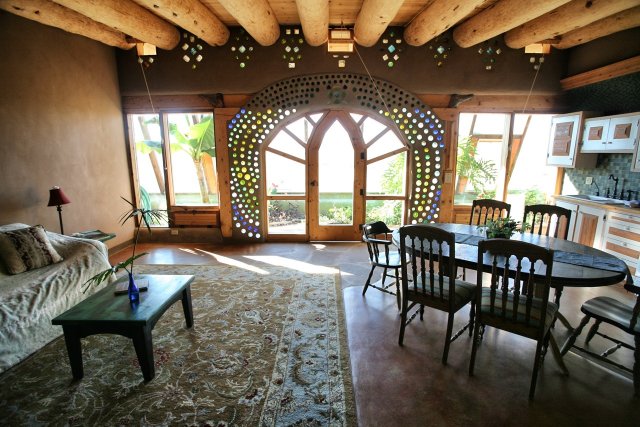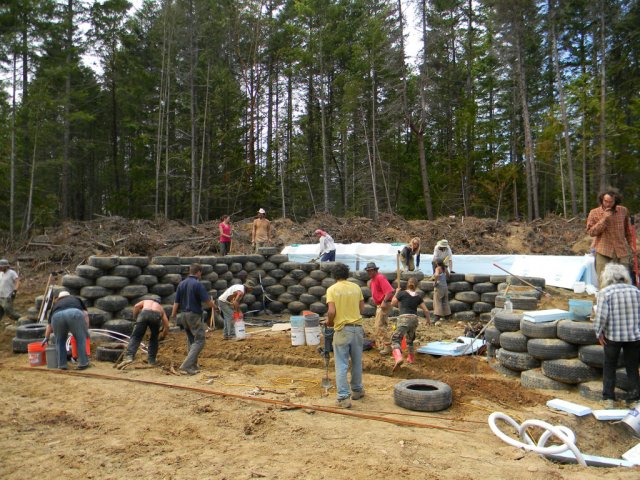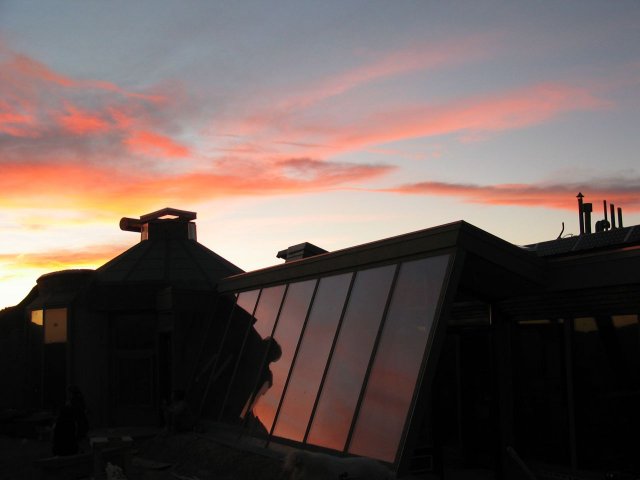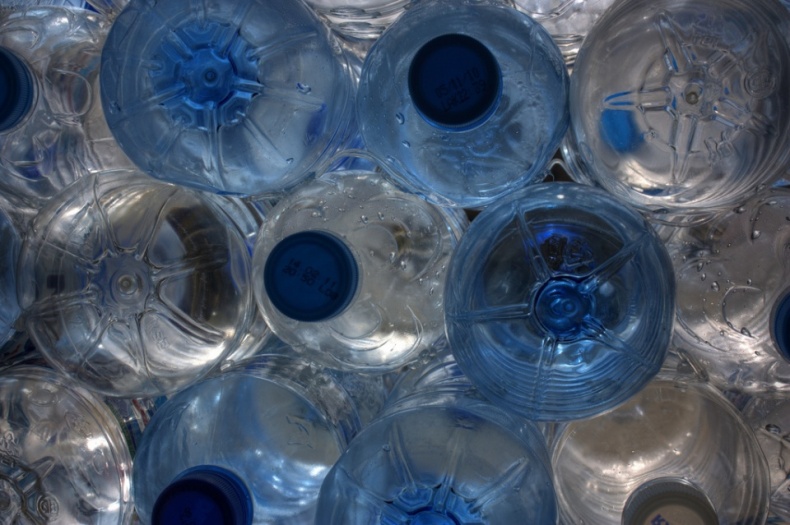
Water bottles by Klearchos Kapoutsis
Have you ever thought about how much water is wasted every day? We flush everything away, down the sinks, down the drain, down the toilet… In Canada, we use more than 340 litres of water per person per day, which puts us among the nations with the highest water consumption. In the chart of countries with the highest electricity consumption we rank fourth, with over 15,000 kWh per capita. The annual heating and cooling cost is just another raid on our wallets. Today, when we're facing rising costs of pretty much everything, it's extremely important that we make a contribution to solving our financial shortfalls by reducing unnecessary levels of our general consumption. But how?
Imagine a house that produces and uses its own electricity from the sun and the wind, gets water by collecting rain and snow, uses energy from the sun and the Warth for heating and cooling, and grows its own food both inside and out. Sounds like a fairy tale, doesn't it? However, every fairy tale tells a little bit of truth. Whether or not you believe in them, take some deep breaths and allow yourself a few minutes to read this article about the revolutionary home building method that uses available local materials. Even though it was invented more than forty years ago by American architect Michael E. Reynolds, for most people the concept of building "Earthships" is unknown. We talked to Michael's son, Johan, to tell us more about Earthship Biotecture.
What is the Earthship? Simply put, it's a self-sufficient structure that provides its own heat, cooling, water, electricity, and sewage treatment. Moreover, it's built from reused or otherwise environmentally sensitive materials that are relatively cheap, readily available, and easy to use. Every house contains sewage treatment that works on the following principle: it captures all household sewage and contains it in planters so it doesn't go down and pollute water aquifiers. "It's basically like the everglades, or a delta of a river, but everything important happens inside the containers and planters, where plants and roots clean the sewage water," says Johan Reynolds.

Hybrid Earthship House

One of the beautiful interiors
Even though any new product or service is likely to have a higher price tag, that's not the case with Earthships — or at least not anymore. It's true that costs were a bit higher some 40 years ago when the building method was first introduced. However, lowering the cost to about the same as other structures has now been achieve. These days, you can build any Earthship for about the same price as any other conventional home (per square foot). Moreover, Earthships don't have any bills associated with them — no electrical bills, no food bills, no water bills. What's even better, they're easy to build, so you can construct them yourself or have someone build them for you. Sounds like a utopia? Perhaps.
Earthships Principles
Built with Natural & Recycled Materials

Recycled materials are used for the constructions
One person's garbage is another person's treasure. "We use local materials that can be found everywhere around us — tires, cans, bottles, cardboard, plastic bottles. It may sound crazy to build a house out of tires or cans, but there really isn't anything like trash for us; everything is a potential building material. That is the first and most important principle of Earthships." All of these materials have their own qualities and are required to align with the environment. The materials used have to be durable and must be able to last without chemicals. They must not break, crack, or fracture in case of an earthquake. Using plastic or glass bottles allows natural light to burst into buildings and gives the walls amazing colours, while using cans makes walls extremely strong and resistant. To lower the cost, the materials must allow for the required assembly skills to be learned by anyone within hours.
"From this point of view, Earthships are not only cheaper but also earthquake-resilient, stronger, safer, more secure, and most importantly they increase your return on investment since the value of your Earthship is going to be much more than of any conventional home."
Thermal/Solar Heating & Cooling
When it comes to heating and cooling, the Earthship uses the Sun and the Earth to maintain a comfortable temperature of about 70 to 72°F year around, in any climate, with very little or no fossil fuel use, whether it's the dead of winter or an extremely hot summer. How is that possible? Johan explains:
"We spent over forty years figuring that out. I admit we made some mistakes, but it was a crucial step in learning, growing and improving ourselves. We had buildings that got way too hot, other structures got way too cold, so we had to play around with a whole range of materials. The most important thing is that we learned how to configure our houses properly."
A perfectly functioning home is like a temperature battery: the walls absorb the temperature and hold it during the day and at night, when the temperature drops, the warmth from the walls and floors leaks out, but it still remains warm enough.
"It takes approximately six to twelve months (depending on the type of climate) for the Earthship to stabilize. In the first year, the temperature varies anywhere from 67 to 74 degrees but after that pretty much stays between 70 and 72 degrees."
Isn't that great news when taking into account that home heating costs have more than doubled over the past ten years? (Even though heating costs are unpredictable, it's very likely that they will only go up in the future.) You might also be interested in maintenance costs. This is the part where Earthships DO NOT outperform conventional buildings. It's not less, but it's not more either. You just need to do different things. "You still have a roof, you still have places that catch water, you have to think about leaves, solar panels, you want to make sure you have adequate water in your batteries, and you've got to maintain your planters so they are not overgrown. Basically the same amount of work — just different things," Johan admits.
Water Harvesting
Water. Earthships catch all the water from the sky, clean it, and then it use for different purposes.
"Imagine that you do your dishes in the sink. Then the sink drains down in the planter. You use the water in the planter to clean the sewage and also to grow food, and after all the plants clean that water, we pump that out and flush the toilet with it."
This simple yet effective example of water reuse gives us an idea of what the whole project is about: simplicity and effectiveness, and, of course, no wasting of precious resources such as drinking water.
Contained Sewage Treatment

Corner Cottage Earthship
The Earthship neither exports sewage to a sewer system nor puts it into the ground. It has its own mini sewage system that catches rainwater. The roof is shaped to collect every drop of rain that falls on it. The water is then stored in large cisterns, cleaned for drinking and other purposes, and then pumped out to flush the toilet. This is an example of how to use water to the fullest.
Food Production
The planters inside the sewage treatment system hold an enormous amount of water, which is later cleaned by plants. Why not combine the useful with the pleasant? You can have a whole bunch of different plants with deep root system in your sewer system. "Because you have all these food chunks, and all these hair and soap particles and all other stuff that the plants love, they actually just go crazy with it, so it's really easy to grow plants. The same applies to the maintenance, so if you go away for a month, and you come back, you'll most likely find a jungle inside your living space rather than only in a planter." What makes the system even more unique is that it works in nearly every climate.
"We are hearing from guys in Mexico and some high-elevation parts of the U.S. where it gets super cold in winter that they are able to pick bananas, grow oranges and all kinds of veggies in the winter."
All of this sounds great, but we have to add that it's not possible to grow enough food for a family to live off completely in just one Earthship. You still need a community for meat, wheat, and other irreplaceable food items. However, in an emergency situation, the Earthship can definitely help you survive for an extended period of time.
Solar & Wind Electricity
Earthships are designed to produce their own electricity and store it in batteries. It's collected from the sun and the wind, converted into electricity and later supplied to the home. It's totally self-sufficient, since none of it is required for heating and cooling.
There's no need to be afraid of change even though Earthships may be different from anything you've seen before. After all, life is all about change. If you're interested, there's an endless amount of information on the company's website, so all it takes is one click of your mouse…


